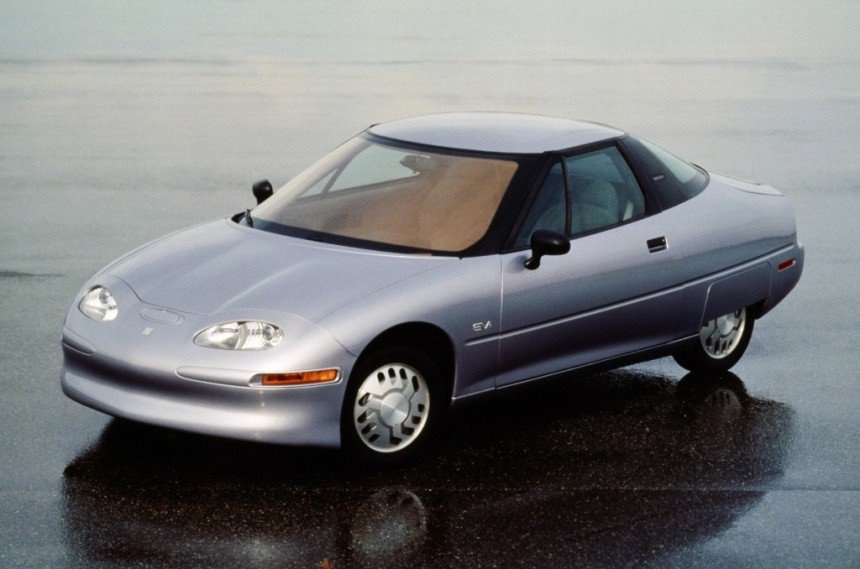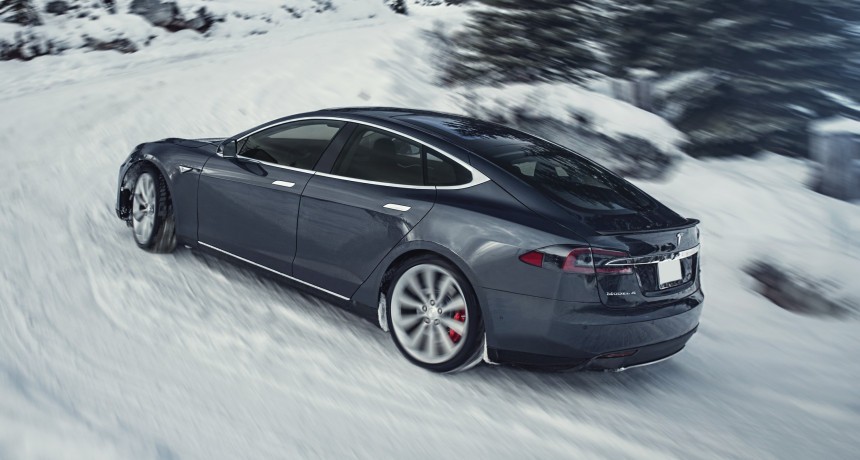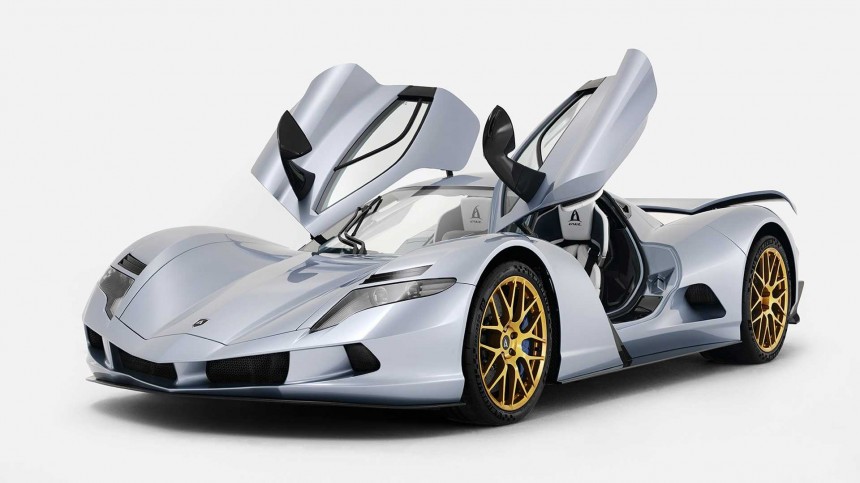It’s hard for us modern peeps to imagine it, but EVs predate vehicles fueled by gasoline, diesel, compressed natural gas, or liquefied petroleum gas. In order to understand how the automotive industry has given us 2,000-hp electric hypercars, we first have to turn back time to 1828.
That year, a gentleman by the name of Anyos Jedlik designed a crude electric motor. The Hungarian priest and physicist then attached it to a small model car, et voilà! A few years later, Scotsman Robert Anderson took that concept in a different direction with a fully electric carriage.
The non-rechargeable batteries from that period rendered his carriage a parlor trick rather than a bonafide means of personal transportation. Rechargeable lead-acid batteries would follow suit in 1859 thanks to French physicist Gaston Planté. Yet another French physicist – Camille Alphonse Faure – would significantly improve his senior’s design in 1881, paving the way for commercially viable electric carriages and vehicles.
French inventor Gustave Trouvé publicly demonstrated what is believed to be the first human-carrying EV that same year. German engineer Andreas Flocken is credited with building the first proper electric vehicle in 1888, whereas the first electric vehicle in the U.S. came out of Des Moines in the form of a six-passenger wagon. Designed by William Morrison, said contraption was capable of reaching 14 miles per hour (23 kph).
Interest in e-motor vehicles may have increased greatly in the late 1890s and at the beginning of the 20th century, but alas, internal combustion steadily chipped away at the electric vehicle’s popularity. Despite quite a few one-offs and oddballs like the Lunar Roving Vehicle and Sinclair C5, electric vehicles wouldn’t come back into the mainstream until the 1990s.
Modern-day electric vehicles can thank the California Air Resources Board for its aggressive push for lower emissions, with the agency’s goal being the switch to zero-emission vehicles. The most prolific EV of that era is – of course – the GM EV1, which needs just under 9 seconds to reach 60 miles per hour (97 kph). The quarter-mile was dealt with in 16.7 seconds. Top speed was limited to 80 miles per hour (nearly 130 kph).
Contrary to popular belief, Nissan's long-running Leaf isn't the first modern highway-capable mass-production electric vehicle. The Mitsubishi i-MiEV is and was also sold under the Mitsuoka, Peugeot, and Citroen brands. Both the i-MiEV and Leaf are hardly exciting, which brings us to 2008, the year the first example of the first-gen Tesla Roadster was delivered.
60 miles per hour in under four seconds was seriously impressive back then, and the 125-mph (201-kph) top speed was good enough for a blistering quarter-mile sprint as well. The Lotus Elise-based Tesla Roadster was originally priced at $98,950. Fewer than 2,500 were made.
The story of the high-performance EV continues with Tesla’s Model S. The rear-drive P85 and all-wheel-drive P85D were stupidly fast, more so if you remember that both of them are full-size luxury sedans that weigh quite a bit more than high-performance supercars of Italian origin.
Those variants were quickly succeeded by the P90D and P100D. Back in 2017, a P100D clocked 2.28 seconds to 60 miles per hour on a prepped surface in Ludicrous mode. Those 2.28 seconds wouldn’t have been possible without the industry-standard rollout before the clock starts. Following the Raven update, Tesla wowed everyone with the Palladium.
The Palladium's Plaid three-motor powertrain features one front-mounted electric motor and two in the rear. As far as mainstream EVs go, the Model S Plaid continues to be in a league of its own. Not only can it reach 60 miles per hour in 1.99 seconds, but 200 miles per hour (322 kph) on full song and 9.23 seconds in the quarter mile are borderline bananas.
The Lucid Air Sapphire does 60 miles per hour in 1.89 seconds, but similar to the Model S Plaid, it’s a mainstream EV. The fastest series-production EVs out there – including the absolute fastest EV ever made – are hypercars that cost way more than the Sapphire and Plaid combined.
The Nevera and Battista come to mind. The Croatian automaker founded by Mate Rimac quotes a simply staggering 1.85 seconds to 60 miles per hour, onto a top speed of 258 miles per hour (412 kph). The Italian alternative, which bears the name of Pininfarina founder Battista Pininfarina, needs 1.79 clicks and cracks 217 miles per hour (350 kph).
This being said, what is the fastest EV out there? To our knowledge, that electric vehicle is the Aspark Owl. Specialized in providing engineering services, the Japanese company wants 2,900,000 euros (around $3.15 million) for each example of the four-motor hypercar. But why euros?
The reason is Manifattura Automobili Torino, the Italian company tasked with building the Owl for Aspark. Theoretically capable of reaching 60 miles per hour in 1.69 seconds, the Owl clocked a remarkable 1.72 seconds with road-legal tires at the Misano World Circuit in Italy in 2020. The company’s original estimate was achieved by computer simulation.
“The world would be a more exciting place if there were more people thinking about exciting things,” declared big kahuna Masanori Yoshida. “That’s why we will never give up our mission and we will keep producing many exciting projects like the Owl.” The Owl is limited to 10 units for the U.S., 20 for Europe, and 20 for the Middle East and Asia.
Believe it or not, a handful are still available to reserve at press time. Standing 99 centimeters (almost 40 inches) tall, the Owl produces 1,480 kW or 1,985 horsepower and 2,000 Nm of torque or 1,475 pound-feet. Its 69-kWh battery offers an electric range of 450 kilometers (280 miles), albeit on the older NEDC rather than the WLTP or EPA’s test cycles.
The non-rechargeable batteries from that period rendered his carriage a parlor trick rather than a bonafide means of personal transportation. Rechargeable lead-acid batteries would follow suit in 1859 thanks to French physicist Gaston Planté. Yet another French physicist – Camille Alphonse Faure – would significantly improve his senior’s design in 1881, paving the way for commercially viable electric carriages and vehicles.
French inventor Gustave Trouvé publicly demonstrated what is believed to be the first human-carrying EV that same year. German engineer Andreas Flocken is credited with building the first proper electric vehicle in 1888, whereas the first electric vehicle in the U.S. came out of Des Moines in the form of a six-passenger wagon. Designed by William Morrison, said contraption was capable of reaching 14 miles per hour (23 kph).
Interest in e-motor vehicles may have increased greatly in the late 1890s and at the beginning of the 20th century, but alas, internal combustion steadily chipped away at the electric vehicle’s popularity. Despite quite a few one-offs and oddballs like the Lunar Roving Vehicle and Sinclair C5, electric vehicles wouldn’t come back into the mainstream until the 1990s.
Contrary to popular belief, Nissan's long-running Leaf isn't the first modern highway-capable mass-production electric vehicle. The Mitsubishi i-MiEV is and was also sold under the Mitsuoka, Peugeot, and Citroen brands. Both the i-MiEV and Leaf are hardly exciting, which brings us to 2008, the year the first example of the first-gen Tesla Roadster was delivered.
60 miles per hour in under four seconds was seriously impressive back then, and the 125-mph (201-kph) top speed was good enough for a blistering quarter-mile sprint as well. The Lotus Elise-based Tesla Roadster was originally priced at $98,950. Fewer than 2,500 were made.
The story of the high-performance EV continues with Tesla’s Model S. The rear-drive P85 and all-wheel-drive P85D were stupidly fast, more so if you remember that both of them are full-size luxury sedans that weigh quite a bit more than high-performance supercars of Italian origin.
The Palladium's Plaid three-motor powertrain features one front-mounted electric motor and two in the rear. As far as mainstream EVs go, the Model S Plaid continues to be in a league of its own. Not only can it reach 60 miles per hour in 1.99 seconds, but 200 miles per hour (322 kph) on full song and 9.23 seconds in the quarter mile are borderline bananas.
The Lucid Air Sapphire does 60 miles per hour in 1.89 seconds, but similar to the Model S Plaid, it’s a mainstream EV. The fastest series-production EVs out there – including the absolute fastest EV ever made – are hypercars that cost way more than the Sapphire and Plaid combined.
The Nevera and Battista come to mind. The Croatian automaker founded by Mate Rimac quotes a simply staggering 1.85 seconds to 60 miles per hour, onto a top speed of 258 miles per hour (412 kph). The Italian alternative, which bears the name of Pininfarina founder Battista Pininfarina, needs 1.79 clicks and cracks 217 miles per hour (350 kph).
The reason is Manifattura Automobili Torino, the Italian company tasked with building the Owl for Aspark. Theoretically capable of reaching 60 miles per hour in 1.69 seconds, the Owl clocked a remarkable 1.72 seconds with road-legal tires at the Misano World Circuit in Italy in 2020. The company’s original estimate was achieved by computer simulation.
“The world would be a more exciting place if there were more people thinking about exciting things,” declared big kahuna Masanori Yoshida. “That’s why we will never give up our mission and we will keep producing many exciting projects like the Owl.” The Owl is limited to 10 units for the U.S., 20 for Europe, and 20 for the Middle East and Asia.
Believe it or not, a handful are still available to reserve at press time. Standing 99 centimeters (almost 40 inches) tall, the Owl produces 1,480 kW or 1,985 horsepower and 2,000 Nm of torque or 1,475 pound-feet. Its 69-kWh battery offers an electric range of 450 kilometers (280 miles), albeit on the older NEDC rather than the WLTP or EPA’s test cycles.




























